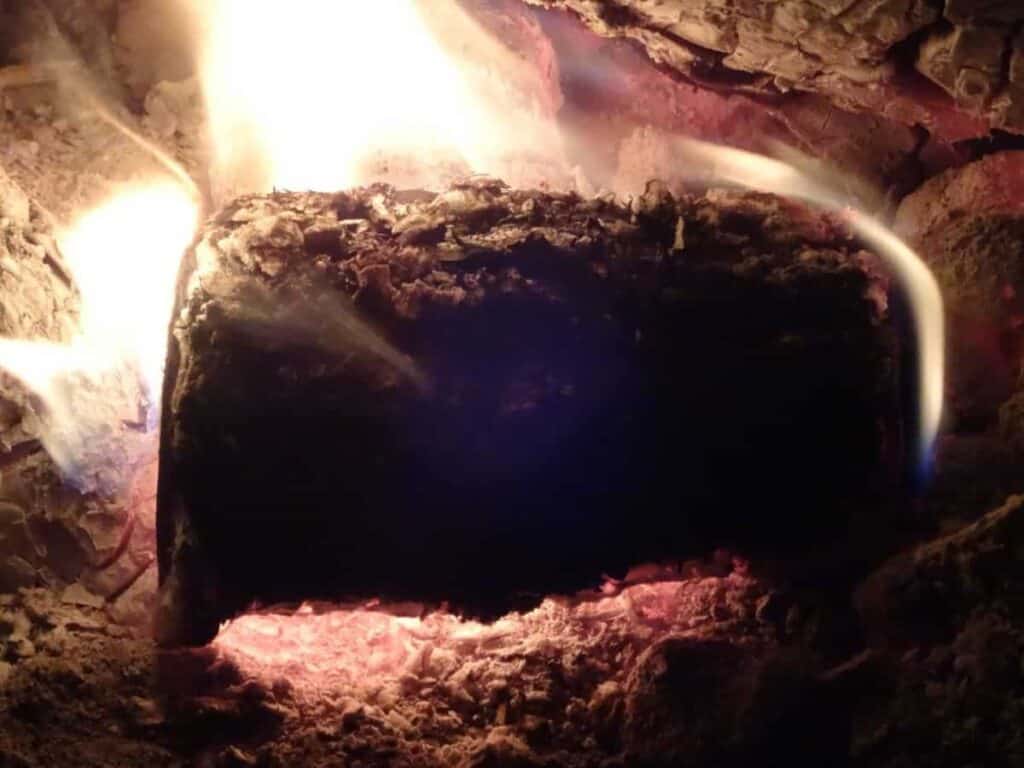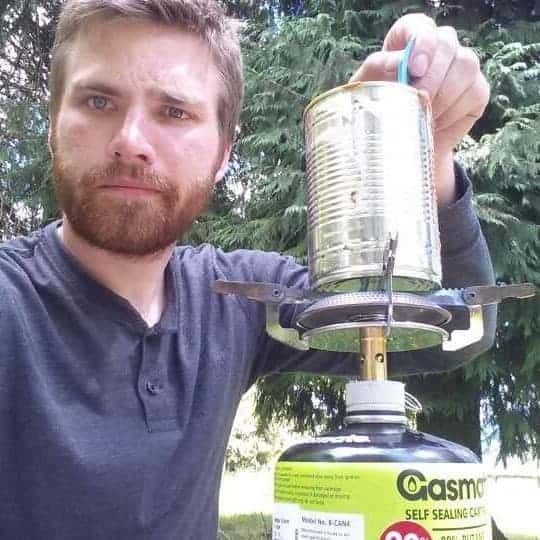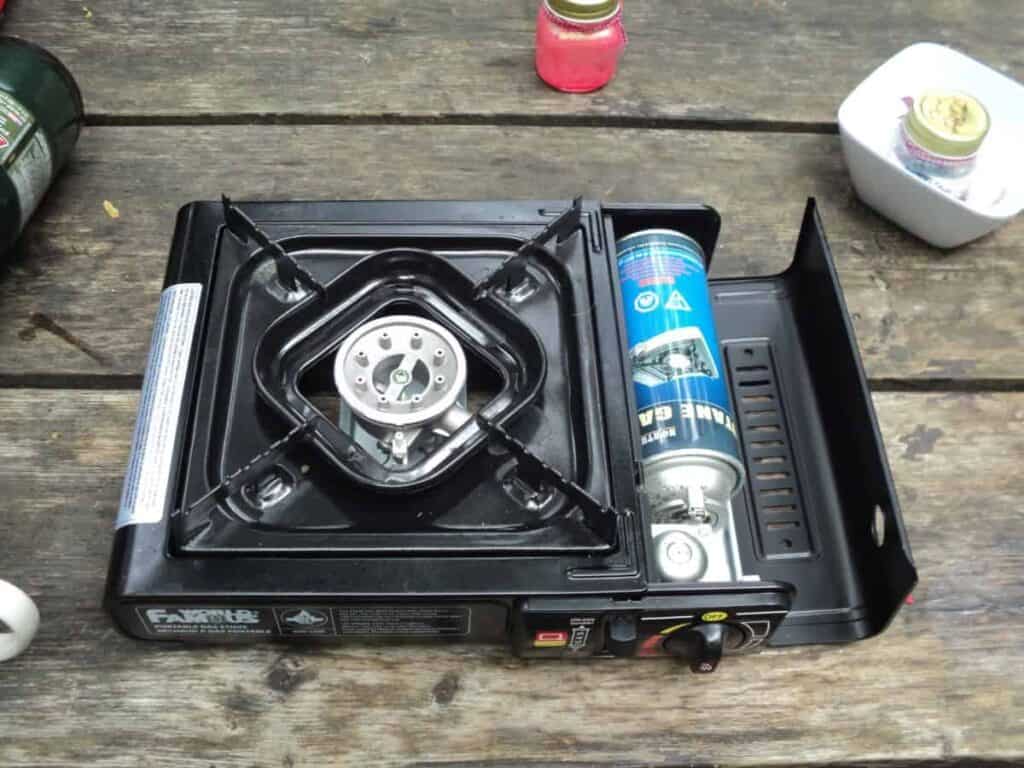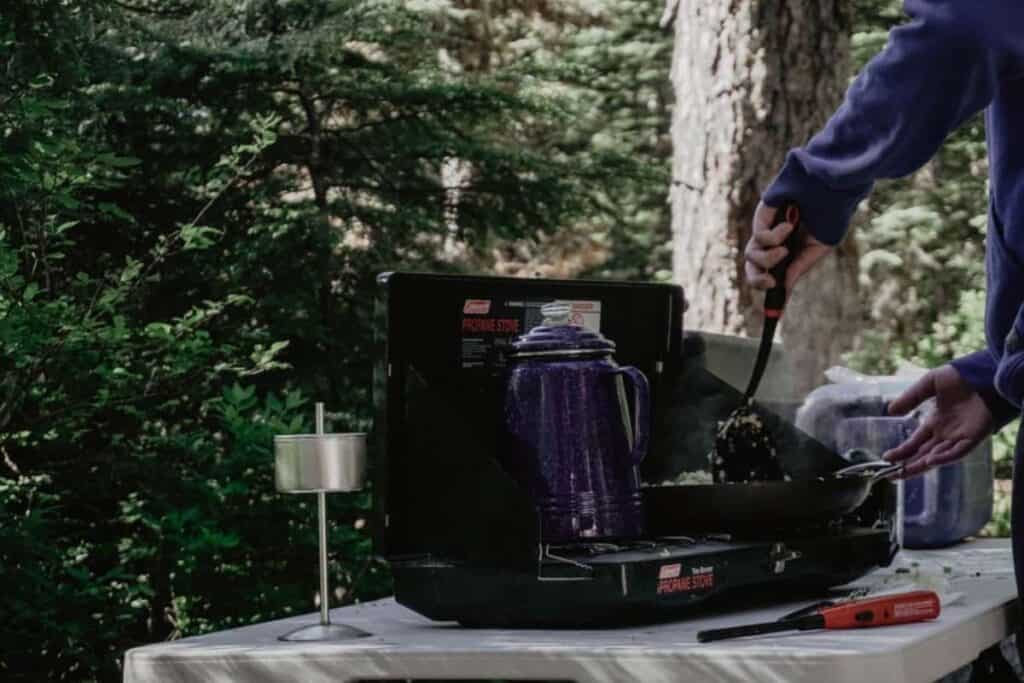Glancing at most of the camping checklists on the internet, you will almost undoubtedly see “camping stove” as one of the items. Does this mean you have to have one? This post is all about the advantages and disadvantages of camping stoves in comparison to cooking over a fire, as well as an explanation of what camping stove types are out there.
Do I really need a camping stove? Camping stoves are only necessary if you are not planning on bringing firewood and tools for starting a campfire in the following conditions:
- You are bringing food that needs to be cooked
- You are hiking somewhere remote without a water filtration system
- You need to boil water for some other reason
- Your campground has a burn ban in effect
Those are reasons you need a camping stove, but even if you are bringing campfire supplies, a camping stove is definitely a nice to have, but let’s talk about reasons why and by the end of this post you’ll have enough information to make a decision of whether you need one or not.
By the way, as an Amazon Associate, I earn when buying qualified products through links on my site.
Is a Camping Stove Always Necessary?
So, if you don’t bring food that needs to be cooked while camping, and if you are bringing enough water, or potable (drinkable) water is available at your campsite, then you don’t need a camping stove.
If you are bringing food that needs to be cooked, but you are bringing fire supplies, then again, you don’t need a camping stove.
There are several considerations for these options, though, and frankly, a camping stove makes many situations more convenient (not to mention safer). Keep reading to see what I mean.
Bringing Food That Doesn’t Require Cooking
Many food options are out there that don’t require cooking. Just imagine what you’d pack for a school lunch and that can give a basic idea of what you can bring camping without cooking.
- Crackers and Cheese (Trisquits and Cheddar being my personal favorite)
- Cold cut or even veggie sandwiches (such as an avocado sandwich)
- Vegetables dipped in Peanut Butter
- Veggie Tortilla wrap (bell pepper, avocado, a little bit of onion, spinach)
You get more options if you bring a camping cooler. There are plenty of foods that you can enjoy without needing to cook them–especially if you are camping for only one night.
Camping Stoves and Potable Water
Whether you are car camping off grid, or backpacking, it’s necessary to either bring drinking water with you, or have access to a natural water source. It’s not safe to drink from natural sources, directly (in most locations) due to risks of diseases. To drink from natural sources, you either need an adequate filtration system, or a camping stove.
Boiling water is a surefire (ba doom psh!) way to kill harmful germs and bacteria making the water safe to drink (after it has cooled down, of course). Boiling water can take a long time and take a decent amount of fuel, so be careful relying on your camping stove to sanitize your drinking water.
Side note: if you find yourself in an emergency situation where you are a day or two journey from civilization, and you don’t have access to a filtration system, or fire supplies, and you don’t have the skills to make a fire without tools (which is extremely difficult), then drinking from a natural source that is relatively clean may be your best option.
Even though dying of dehydration is much more eminent then dysentery from Giardia, for example (which has treatment options). Consider drinking untreated (boiling/sterilized) water from natural sources as your last option, though, since you can experience lasting effects from contracting a waterborne disease.
Advantages of Using a Camping Stove
So, whether you decide you want to bring a camping stove or not, here are some general advantages:
- Easy to ignite with a match or a lighter, even in wet or windy conditions (Self-igniting camp stoves make this even easier)
- Cooks food evenly
- Easy learning curve: cooking with a camp stove is similar to cooking with a gas stove in your kitchen
- Variable heat: it’s easy to change the heat by controlling how much gas you are burning
Disadvantages of Using a Camping Stove
- A camping stove means you need to bring gas canisters to wherever you are camping. Gas canisters do run out, so it’s important to ensure you have enough for your trip
- Larger camping stoves can be quite bulky
- Camping stoves are technology, so therefore, they can break sometimes or be difficult to work with
- Running out of gas fuel is not fun and can end your cooking experience entirely, especially when you are dozens or hundreds of miles away from a place that sells camping stove fuel
- Fuel canister types vary quite a bit, so it can be difficult to find fuel locally that fits your specialized camping stove
- Camping stoves range from $15 to over $200 depending on how fancy you want your stove. It is an additional item to buy in any case.
Camping Stove vs. Campfire

You can’t really snuggle up next to someone on a log next to a camping stove. There’s a charm and magic in a campfire that a camping stove will never be able to replicate. It doesn’t have to, though. Camping stoves are excellent at what they are made for, which is cooking food.
Reasons to Use a Camping Stove Instead of a Campfire to Cook
- Fuel is completely contained in a gas canister
- Camping stoves do not make a mess while burning, and do not throw up ash into your pancakes
- Even if your park has a burn ban in effect, many parks still allow camping stoves making them the only option for cooking your food. Check with your local park rules to determine if there is a burn ban and if there are camping stove restrictions
- Firewood isn’t always easy to procure ahead of time (I say this from experience… we’ve spent hours looking for firewood during the late Summer)
- It’s much easier to not burn your food with your camping stove
Reasons to Use a Campfire over a Cooking Stove
- Campfires open up different camping meal possibilities that are not really suited for camping stoves: Tinfoil dinners, roasting weenies, roasting marshmallows, etc.
- If your campground allows it, charcoal is an option allowing for reliable cooking
- Personally, even though it may not be as practical as cooking with a camping stove, it’s always a fun challenge.
- Campfires bring other social benefits. There is always something special about gathering around a campfire talking, or singing, or just hanging out.
- Fuel for campfires is much easier to obtain when backpacking. Often for car camping you cannot gather firewood, but in back-country it is more likely to be permitted to collect fallen firewood.
So, Do I Really Need a Camping Stove?
You now have a lot more information about the advantages and disadvantages of camping stoves, as well as some comparisons between cooking with a campfire vs. a camping stove. So, the ultimate question, do you need one? Camping stoves have a huge price range and you can easily spend over $100 on one.
I honestly recommend having a camping stove. You don’t have to bring food that you need to cook while car camping (or backpacking for that matter), but if you do, it’s always nice to have a backup in case a campfire is out of the question (such as because of a burn ban, rain, no firewood, or other circumstance).
If you are a beginner, then you can get a backpacking cooking stove, which you can find for as little as $15, with a fuel canister for ~$5. These backpacking stoves fold up to be very tiny, but they are perfect for augmenting a bigger meal, or for taking over if a campfire isn’t going to happen.
Me and my wife have gone on over a 10 car camping weekend trips in the past year and a half, and we still only have a backpacking cooking stove. It’s definitely possible to do. There’s only two of us, though, so it’s definitely worth doing some research on what camping stove you want to go for.
If you would like to see what backpacking camping stove I use, we compiled some of our favorite cookware here.
Types of Camping Stoves
To help in deciding on what camping stove you want to go for, I’ll describe each one to give you some more information.
Backpacking Stove

Backpacking stoves typically mount directly onto your gas canister. They fold out so they can support a pot or a pan (it even supports our 10″ cast iron skillet without any problem.
Backpacking stoves are very compact, and come apart easily. Mine fits into a 3″ square packet about an inch deep. You are not able to cook more than one thing at at time with it.
Additionally, these backpacking stoves typically do not have any self-light options, so you need a match or a lighter to be able to light your stove.
Backpacking Stove Price
Our backpacking stove I purchased for $13 in 2014, and it’s still going strong, today.
As with anything, you can spend a lot more money on premium backpacking stoves. One of the most recognizable brands of backpacking stoves is the Jetboil. It requires special gas canisters, and is famous for its focused heat that can boil water very quickly. These systems can run you around $100.
Side comment: I went backpacking with my friends one time with their Jetboil systems. Although indeed, it took longer for my $13 backpacking stove to boil water, it was only longer by a few minutes. I didn’t feel like I was missing out on that much.
Fuel Type
Unless you are getting a backpacking stove with a proprietary fuel type, most backpacking stoves fit with a butane canister (or a butane propane mix), although you can find some that attach to the green Coleman 1 lb propane tanks. Fuel for backpacking stoves will cost anywhere between $8 to $20 per canister.
Single Burner Stove

This file is licensed under the Creative Commons Attribution-Share Alike 4.0 International license.
Single burner stoves are ideal for car camping for one or two people, as they are relatively compact, and make for using a pan to cook very easy.
Because you are not balancing your stove on a gas canister, these stoves are much more stable for cooking on and allow for bigger pots and pans.
Single Burner Stove Price:
A single burner stove in this style will typically range in price from ~$25 to ~$50
Fuel Type:
Many of these single-burner stoves take a butane canister as you see in the picture, instead of the low squat canister you will see used for backpacking stoves. Many also will take a standard 1 lb propane tank. Some will take both!
Double Burner Stove

Photo by Nathan Shipps on Unsplash
If you are getting serious about cooking outdoors, and are preparing food for more than 3 people, then a double burner stove might be in your future. These will occasionally have additional features such as a push-button ignition, and will often have a windscreen to prevent any issues lighting your stove.
A double burner will allow you to have a hotter and a less hot stove going simultaneously to allow for simmering and cooking at the same time. These are fairly easy to use (sometimes the push-button ignition is imperfect, and it’s better to have a lighter on hand, just in case)
Double Burner Camping Stove Price
The most recognizable double burner camping stove is the green Coleman. They have multiple models, and their base currently is running for $50.
Nicer models have more features, such as the push start, as well as rugged durability. You can expect to see double burner camping stoves from around $50 to $120.
Fuel Type
Typically these size of stoves attach to a standard 1 lb propane tank, directly. With an adapter hose, though, you can connect those gigantic 15 lb propane bottles to your camping stove. The adapter runs around $15. This is a great idea if you are going to be camping for many days.
Camping Grill
Some camp stoves actually will heat a grill rather then a burner. The gas emitters are in a line rather than a circle. This is ideal for cooking steaks, hamburgers, grilled vegetables, etc. This gives more of the experience with cooking with a charcoal grilling stove rather then using a stove-top burner.
Camping Grill Price
A cheaper camping grill starts around $70, but they can go up to $150. The more expensive sets sometimes come with a stand so you can set up your stove without a table.
Fuel Type
These camping stoves work with standard 1 lb propane bottles, and can also attach to a larger propane bottle with an appropriate attachment.
Multi-burner Camping Stoves
If you are cooking for tons of people, but you still want the portability of a camping stove, then there are more expensive options. These camping stoves resemble a gas range you would find on the back of your house, but with some more portability.
These stoves are much heavier, and not really ideal for a small vehicle, but they do come with their own stands so you can use your burner without a table.
Multi-burner Camping Stove Price
You can find portable multi-burner camping stoves for around $100, but they go up to over $200.
Fuel Type
These bigger stoves are more geared to connect to the large propane 15 lb bottles.
Related Questions
Can you use a camping stove indoors? Homes often use natural gas for heating and cooking, so it is possible, but extreme caution is needed because it’s possible to die from trapped gas. A camping stove can be used indoors if you make sure you have great ventilation, and that you sure you never leave your gas can unattended (in general and especially indoors). Tent vestibules or other locations that have protection from the rain but have open access to free air are recommended.
How long does a camping propane tank last? A double burner Coleman camping stove with both burners on high will burn through a 1 lb propane canister in 1.5 to 2 hours.
